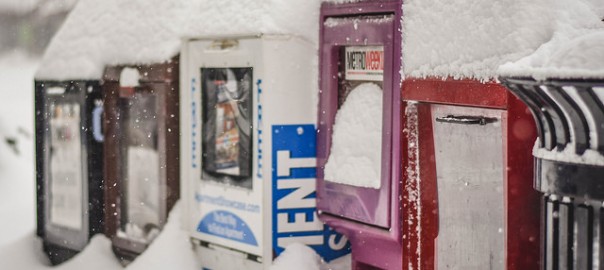Our teammate Jole Seroff shared this Washington Post article about accurate snowfall measurement at Washington, DC’s Reagan National Airport. Did you know that there are National Weather Service guidelines for how to measure snowfall accurately?
Many of us instinctively measure snowfall by sticking a ruler in the snow until it hits the ground. According to the Post article, this is not effective, especially in cases of extreme snowfall, because the weight of the new snow can compress and compact the older snow.Instead, laying down a wooden snow board in open air (not influenced by branches that may catch snow or rooftops off which extra snow can be blown) and then measuring snow on top of the board before repositioning it to “catch” new snow is the protocol.
In the case of the airport snow, the official measurement of 18″ may have been as much as 2″ less than the actual snowfall.
This is a great, quick example for students of how data is not infallible. Human design of measurement tools — whether, it’s deciding to use a ruler to measure snowfall, designing the phrasing of a question in an election poll, or deciding how to count multiracial citizens in a census — determines the numbers we get.
Image: “Snowzilla 2016: Newsstands” by Matt Popovich on Flickr. Public domain.
